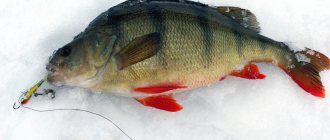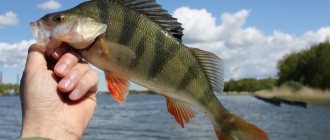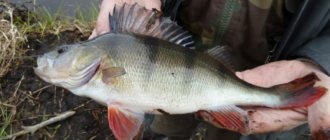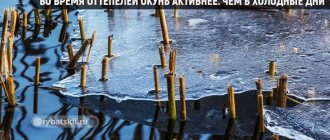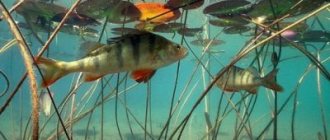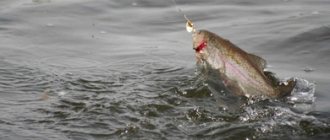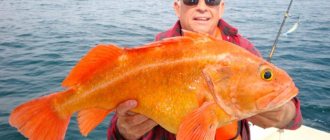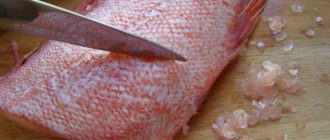Perch is probably the most greedy fish of all reservoirs in the vast territory of Russia. Both in winter and summer, a large number of anglers flock to rivers or ponds to catch this striped predator.
In winter, this prankster is the main trophy in the fisherman's catch. However, you need to thoroughly prepare your gear so that your fishing is not in vain. In winter, the best bait for catching this predator is a jig.
A jig is a tungsten or lead droplet of various shapes, with a sharp hook soldered into it. In the body of this droplet, or as many fishermen call it a pellet, a special hole is made for the passage of fishing line. However, on some specimens, a ring is soldered into the upper part of the pellet.
As a rule, the number of hooks in a jig often does not exceed one, but in some types, such as “devil”, the presence of hooks ranges from 2 to 3 pieces.
There are several types of such bait: round, semicircular, triangular, drop-shaped, double and diamond-shaped. They differ only in the appearance of the pellet.
For example: round, are balls of different diameters, semicircular, have the shape of an oval, triangular, or trihedron, made in the form of a triangular pyramid, double, have the shape of 2 balls of different diameters welded together, representing the appearance of an ant, and diamond-shaped, which are made in the shape flies.
Jigs for catching perch
Perch bites on almost any jig, but especially prefers dark colors . When choosing, first of all, you should pay special attention to black, red, dark green.
Yellow, silver and copper colors are also often used.
Also, the size of the jig plays an important role. In the spring and summer seasons, the size can be larger, approximately from 3 to 5 mm, than in winter, since the water during the ice-free period is saturated with oxygen and the perch actively feeds.
In winter, it is recommended to choose small sizes of 2-3 mm, and when fishing in shallow water in standing water - 1 mm. This is explained by the fact that when lowering the jig under the ice, it will not sink for a long time and be carried away by the current.
But if the pond has a depth of 4 to 6 meters, and there is a current, then the weight of the bait should be changed to a heavier one. The size also depends on the habits of the fish in a given weather.
In sunny winter weather with slight frost, the activity of the perch increases, and accordingly its bite is active, so a medium-sized jig will perfectly lure a hungry predator. With the onset of February, the activity of perch decreases, finding and especially catching it becomes more difficult.
mothless
In this case, jigs with a small shot will significantly increase the chance of catching.
As for the shape, complete freedom of choice is given here, since a hungry predator bites on any type of jig. But baits such as “devil”, “goat” and “ant” have proven themselves well. The devil is a drop-shaped black pellet with a treble hook.
Works great almost any time. When playing intensively with the “devil,” vibrations are created in the water, which lure the perch and provoke it to grab the bait, and the presence of a treble hook will help significantly reduce the number of fish. The “goat” differs from the devil only in the presence of hooks.
There are 2 of them on this jig. The ant is made of two pellets connected to each other into which a hook is soldered. However, relying only on these 3 types of jigs is also not advisable.
Experienced fishermen use their entire arsenal of catchable baits to determine which bite is the most intense in a given water area.
The hooks of jigs must be sharp and not show signs of rusting. It’s not uncommon for professional fishermen, when buying a jig in a store, to pay attention to the hook. If its tip is parallel to the pellet, then they bend it towards the shank of the hook at an angle of 60 degrees.
This reduces the chance of the perch getting off the hook.
Also, there is a reelless version of jigs. They are called that because when fishing, the bait, mostly bloodworms, is not put on at all.
As a replacement for bait, different colored beads or beads are placed on the shank of the reelless fish, while the tip of the hook remains bare. The main color of the bead when fishing for perch is considered to be red, since it resembles a bloodworm when playing with a jig. But for the sake of experiment, you can look for your catchy colors of a reelless jig.
Main trends
It is impossible to determine the best jigs for catching perch in winter. But, knowing the peculiarities of the predator’s behavior, general trends are identified, taking into account which will help the fisherman come up with a fishing scheme that works in specific conditions. The best jigs for perch in winter are those that the fisherman picked up and presented to the fish, provoking the predator to bite. The Internet is full of ratings and top lists of jigs for striped fish, but the criteria for choosing baits for these lists are unclear.
Bait body
The shape of the jig determines the game, fishing depth (by weight) and other features. The fishing world has come up with countless different options, from standard shot to devils and honduras. It is also difficult to determine which jigs are best for perch because this predator is extremely curious and aggressive, it tries to taste everything. Therefore, in winter, things that are not obvious at first glance often work, for example, a ball of white foam on a hook or a bunch of felt or thread. The size of the bait is more important here.
At different periods of winter, perch prefers either larger or, conversely, small decoys. And it doesn’t matter whether it’s a small undersized sailor or a one-kilogram humpback whale. At one time, the striped bait is better on balancers, spoons and ratlins, at another – on jigs. During periods of extreme passivity, it is better to try to seduce him with the smallest tungsten baits. At the beginning of winter, perch takes larger baits better, and closer to spring – small ones. Many anglers note that even during active feeding at the end of winter or on the last ice, small sizes work better.
Color and brightness of additional elements
The perch is attracted to almost any movement and stimulus. This is the basis for the tactics of collecting fish from long distances by initially playing with a large bait with amplitude movements (swinging the hole). But, having accumulated under the hole, the striped fish often watches the game with interest, but does not take it (this can be seen from the lifting camera shots). This is more relevant for borerless, since the predator is most likely to react to live bait. The colors of the attachment jigs are of secondary importance. The main thing here is the bloodworm, and the body of the bait acts as the necessary weight. To overcome this situation when fishing with completely artificial baits in winter, the following actions are used:
- Experiment with different rig options (towards reducing the size of the bait).
- Try different colors of lures and different decorations on the hook.
- Continue to play persistently and monotonously, trying to get the perch out of patience. Sometimes it works.
A peculiarity in the behavior of the striped fish is the instinct of food competition. It is important to catch the flock, make one or the other bite. And then the rest will join in.
What color jig does perch prefer in winter? This predator definitely loves the color red. It works almost always. Therefore, if you don’t want to experiment too much, then red is used in hook decorations. By the end of winter, the predator responds better to brown and dark green tones. This is due to a transition in the feeding of crustaceans and insects, as well as a period of relative passivity. An active predator may target white, yellow, blue, orange or combinations thereof.
The body of the decoy is painted in different colors. Both black and shiny (silver, yellow or copper) options work well in winter. It is impossible to say unequivocally which jig the perch likes. The generally accepted opinion is that natural colors (black, brown, silver for fry) work better in shallow waters. At depth and in conditions of poor visibility (at dusk, in muddy water) - bright provocateur colors, acidic, orange, yellow. Some fishermen effectively use phosphorus jigs for perch.
Fastening
Often, inexperienced fishermen ask the question: why does the fisherman sitting next to me bite better, but I don’t?
This may be due to the attachment of the jig to the fishing line. When fastened correctly, the bait in the water is positioned with the hook not down, but to the side. The game resembles an imitation of a living creature under water. If it is attached incorrectly, the fish simply gets scared and does not want to try the bait.
First of all, you need to select a fishing line. The line should be set from 0.8 to 0.12mm, since the perch can detect even minor deviations in the line. In the summer, you can set a thicker fishing line diameter, but not higher than 0.16mm.
After choosing a fishing line, a jig is attached to its end. A fishing line is threaded into the hole on the pellet and tied with a strong knot. At the same time, the angler should pay special attention to the position of the jig after the attachment procedure.
At home, the position of the jig can be easily determined by filling a jar or other transparent container with water, lowering the bait into it, and making several movements with your hand up and down. If the jig plays smoothly in the water, then it is attached correctly and on the reservoir, the fisherman will not have confidence in the fact that the jig is attached incorrectly.
Collecting tackle
Success when fishing for devils will come to those anglers who assemble balanced gear. Many people successfully use a balalaika-type fishing rod - it is light, sensitive and allows you to animate the smallest little devils.
At the same time, due to the fact that fishing for devils is always an active game with constant movement of the hands, the fishing rod must be comfortable, light and reliable, so as not to turn pleasure into hell.
The fishing rod should have a sensitive carbon fiber whip.
An ultra-sensitive nod made of lavsan, a clock spring, or boar bristles is required. The length of the guard is around 10-15 cm. You need to select a specific model, material, and length experimentally and preferably in the bathroom at home. A suitable nod must be in balance with the entire tackle. Don’t sag too much under the weight of the devil, but also don’t jump like on a trampoline at the slightest jerk during the animation of the bait.
httpv://www.youtube.com/watch?v=—MEeMenuKc
When fishing with a reelless bait, the most frequencies and amplitudes can be set to an underloaded nod; this must be taken into account when choosing a guard for fishing with a devil.
Balalaika fishing rod
Cone nods
Only fishing line (less often fluorocarbon) is used, no braids. You need a special monofilament line that is capable of operating in a wide range of temperatures without loss of strength and elongation, always from trusted manufacturers and sellers. Since it is difficult to find ultra-thin fishing line of the required quality, we recommend ordering Japanese fishing line. The layout of the monofilament thickness is as follows:
- for catching sports perch with a little finger “amount” of 0.05-0.08 mm;
- universal diameter for most situations 0.08-0.14 mm;
- if you plan to catch large perch from 500 grams and more than 0.14-0.16 mm.
If the fishing conditions are not clearly defined, then ideally you need to have several balanced gear for different conditions. The first is for micro-devils 0.3-1 grams, the second is universal for working with the main weights of devils up to 2-3 grams.
Briefly about how to tie a devil to a tackle:
The figure eight, clinch, and palomar knots are suitable. It is good to tighten the knot through a toothpick so that the turns lie loosely on the fastening ring. This will give additional freedom when playing the jig - an additional temptation.
The main thing is that the rewinder hangs clearly vertically, otherwise normal play will not be achieved.
The gear is assembled, the devils are selected, the necessary minimum theoretical luggage is there, stereotypes are broken by practice and experience. All that remains is desire and you can go to the pond. NHNCH!
Nozzles
The main attachment is, of course, the bloodworm. The perch greedily grabs such bait.
In addition to bloodworms, maggots have also proven themselves well. When fishing with a jig, the bloodworm must be carefully placed on the hook, since its body is very delicate. It would be correct to put it on from the tail. To do this, the bloodworm is taken by the upper part and placed with its tail on the sting of the hook.
You can also put on a bunch of bloodworms , which in the water will lure the perch with synchronized movements.
However, the vitality of bloodworms is not long, so the angler, in the absence of a bite, needs to check the bait from time to time and change it if necessary.
Maggots, unlike bloodworms, are more active and tenacious. It is also put on the hook of the jig from the tail section. Some anglers like to balance these 2 baits, making a sandwich out of them. To do this, first put a maggot on the hook, and then a bloodworm, or vice versa. These baits are widely used in winter.
With the onset of the summer season, the bloodworm fades into the background, giving way to the perch’s favorite delicacy during the ice-free period - the worm.
The worm is the most common bait for catching almost any fish in Russia. The perch bites on it without hesitation. The worm, like bloodworms, is put on a hook and lowered into the water. There, with his quirky movements, he lures a hungry predator, who cannot resist the temptation and grabs the bait.
Maggot is also a common perch bait at this time of year.
Catching winter perch using the devil: searching for “sailors”, strategy, fishing
Small perch stay in the coastal zone almost all winter, among vegetation, small branches, cattails and bushes. Less often, it can migrate to coastal edges in search of sources of food and oxygen.
When catching medium and large striped robber, everything becomes more difficult, but also more interesting. It changes its sites depending on many factors - the specific period of winter, weather conditions, type of reservoir, atmospheric pressure and others. The main tactics of a successful bass fisherman when fishing with baitless jigs, in particular with devils, is an active search and parallel exploration of the reservoir.
Where to find perch when fishing with a reelless bait - devil
You can catch perch with the devil in any body of water and at almost any time of winter. But, of course, its parking places will change. And the first task of an angler is to know where to look for perch...
It would be incorrect to say that the perch moves randomly around the pond. This thesis is not fundamentally true; with such an approach, especially on an unfamiliar body of water, the fisherman is doomed to hopelessly catching single specimens without a system. Yes, perch is characterized by migration during the freeze-up, but all its movements are subject to instincts and external conditions.
Depending on the season - winter migration of striped
The migration of perch is determined by weather conditions (pressure is paramount in winter), the presence of oxygen, the movement of the food supply, as well as the nature of a particular reservoir.
On the first ice, as soon as the ice has become and for 4-6 weeks after, the perch continues to stay near its favorite autumn places. Near the flooded snags and bushes near the shore. It can stand on the shore edge and fall from it into the depths. The largest individuals stand at the exits from the pits.
When catching small devils, by-catch often includes roach, bream, and sometimes crucian carp.
At the beginning of freeze-up, perch continues to actively move and feed, gaining fat before the dead winter. It is also worth moving for the winter angler, anticipating and anticipating the movements of the predator. The holes are scattered in a checkerboard pattern at a distance of 10-15 meters in order to quickly cover a promising area.
And having found it, hit the target clearly, without wasting time on secondary tasks.
The coastal zone among fallen trees and bushes is promising for perch fishing at the beginning of winter (and more or less safe)
In the wilderness, everything is somewhat different. At this time, the striped one rolls down to deeper places and falls into a kind of suspended animation, but not one hundred percent. In January-February-early March it is worth looking for changes in depth, channel and coastal edges, underwater anomalies (islands, patches, snags, sudden changes in stream).
In this case, the holes are drilled more closely at 3-6 meters from each other. And the most beautiful points are drilled even more tightly.
At this time, all possible animation methods and types of devils are used. In order to stir up the passive predator as much as possible using all possible methods. Passive bass does not equal dead. He can be brought out of the frozen result and forced to grab the jig.
Changing the devil to the smallest size, up to 1-2 grams, often gives the result.
Important! During extreme winter conditions, it is worth paying attention to places with maximum oxygen saturation. Places of confluence of rivers and streams, near discharges of hydroelectric power stations and dams, near artificial and natural wormwood, among thickets of reeds and other above-water hollow vegetation.
At the end of the freeze-up, when the ice begins to gradually melt and areas of open water begin to appear in the current, the perch begins to move and become active again. It emerges from the depths and begins to hunt in half the water, gradually approaching the early winter moorings.
Large water area - where to go?
On large bodies of water (reservoirs, lakes, river bays and rivers themselves) it is much more difficult to find a promising point. Especially without knowledge of the reservoir and a local guide. It is clear that wandering aimlessly through such territories is futile. Therefore, we are looking for any landmarks - changes in depth (determined by a depth gauge and the color of the ice), anomalies on the bottom (banks, bends in the bottom, shallows against the backdrop of great depth), any snags, fallen trees, changes in the direction of the current, and also - be sure to look for accumulations fishermen The latter is not shameful and even useful.
In large and unfamiliar waters, it is worth paying attention to sedentary old people/old-timers - often, they are the most important litmus for the presence of fish. But we don’t get impudent and don’t drill closer than 10-15 meters.
Snags, fallen bushes and branches are a perch’s stopping point throughout the winter
Medium-sized and large perch - humpback fish, of course, are in snags and at depths. In such places, when fishing in the current, it is worth drilling holes behind the snags downstream - this is the most promising method of fishing in such points.
You should prepare 8-15 holes in advance and then process them starting from the first.
Moreover, in this case, one can interpret the well-known proverb: “the fisherman’s legs and arms feed”; you should not linger for a long time on one hole. If there is no bite for 5-10 minutes with several types of animation, you need to move along pre-drilled holes. And then look for a new promising point.
It should be noted that when the water level drops, the perch will also move to deeper places - such situations are observed in reservoirs, rivers near dams, lakes connected to rivers.
Advice! It is important to start exploring the reservoir in the summer, if possible. It is in the summer that, with the help of your eyes, experience, spinning rod and echo sounder, you can identify promising spots for perch, including in winter.
Strategy and tactics of a fisherman's actions on a reservoir when catching perch with devils
Once on the pond, we determine promising perch anchorage points (see above) so as not to waste time and effort searching throughout the entire water area. We study the relief, characteristic turns and bends of rivers, depth differences, edges, holes using a depth gauge. We designate snags, fallen trees and areas near them.
If the reservoir is familiar, we remember summer tasty points and superimpose them on winter realities.
We drill starting from the very shore and towards the depths in a checkerboard pattern with a number of 8-15 holes at a distance of 6-8 meters from each other, covering the entire marked area. The deeper, the larger the devil is used so that it can be adequately animated.
We start fishing from the first hole, use 2-3 animation methods for 5-7 minutes. If there are no bites, we move on to the next one. We won't stay any longer.
If there are pokes, but the fish is not detected, or the bite is very sluggish, then the perch is passive. To stir it up, you should change the devil to a smaller one/a different color and shape/take a jig with a free hanging tee, change the animation to a more active and daring one, or, conversely, more impressive.
Having fished the first sector and not getting any results, we change the point to a radically different one. Let’s say we were standing near a coastal snag, looking for underwater changes in depth, standing on a channel edge, moving to a bend in the river, etc.
If there were holes with a catch, it is worth marking them. Often a new flock takes the place of a captured one, occupying an empty niche under water.
Influence of weather conditions
The beginning and end of winter is the time for perch to actively bite on reelless jigs. At this time, it is worth actively looking for it throughout the day, often regardless of the weather. But it has been noticed that the bite is more active at times when the weather, and therefore the atmospheric pressure, is stable for at least 3 days.
In remote areas, it is worth selecting thaw days with low pressure whenever possible.
You should not go to the pond when the weather changes. A sudden change in wind is also not a plus.
The type of devil animations that striped robbers like
After a correctly defined point, the first place comes to the correct presentation of the devil - animation.
It is worth considering this point that in most cases the striped robber prefers high-frequency and small-amplitude play, with sharp jerks, chaotic steps, etc. Except in cases of deaf winter and lack of oxygen. On days like these, it’s worth trying fishing, like for bream - slow, impressive with a lot of pauses.
So, basic wiring for an active perch:
- The classic “step” - the mothless fish lowers to the bottom, gives a micropause and then rises in steps of 5-20 cm to 50-60 cm from the bottom. The size of the steps, the sharpness of the rise and its uniformity vary and are selected on the reservoir.
- Dotted strictly vertical rise.
- Uniform or accelerated throwing of the devil up with chaotic or measured dribbling of the jig.
- Dribbling on the steps . A step is made, but instead of a pause on the steps, the jig shakes slightly with the help of the hand or by striking the fingers of the left hand on the rod's whip.
- Lifting and dumping . Uniform rise and release of the nozzle into free fall. The downside is poor bite control.
- Interpretation of the previous options - toss to x, reset to half x . Figuratively, we throw the jig 30 cm, drop it by 15, throw it another 20, drop it by 10 and so gradually bring it to the minimum difference and lower it to the bottom. It is convenient to actively fish a wide range of depths.
- Chaotic impacts on the bottom . The devil walks near the bottom, with impacts against it and a parallel rise of turbidity. A very workable option for perch that grazes near the bottom.
- Cutting "saw links" . The step is not made vertically, but with jerks to the sides at an angle to the vertical. Although the devil is initially a vertically playing jig, this option gives results against an active predator. The jerks are chaotic in different directions. The more active the fish, the shorter the pause.
For a passive sailor, different options for lazy, imposing animation will work:
- stirring at the bottom, almost without detachment from it;
- the slow rise of the devil, with a long pause at the end point;
- pulling along the bottom, if possible (opening hole or wide hole, clean bottom, relatively powerful tackle);
- shallow dribbling almost in one place.
Options for animating a jig
The frequency and amplitude of the devil’s play can also be set by changing the angle of the fishing rod to the horizon. The sharpest and highest-amplitude jerk can be set by holding the fishing rod vertically with the nose in the hole. Minimum - vertically upwards. But, logically, these are two extremes that fishermen do not use. Most often, the entire game with the devil takes place in the range of 45-135 degrees relative to the horizon. The logic is still the same, the more we tilt the rod up, the less sharp jerks will be given to the devil during animation and vice versa.
While fishing, you sometimes have to drill hundreds of holes and walk a single kilometer on the ice. Therefore, we recommend having a comfortable drill with sharp knives, comfortable clothes and shoes, and a minimum of equipment.
It's better to see once
Video clips that reveal important practical aspects of catching perch with the devil in winter.
Seasoned perch on the devil:
Catching perch with a devil on the first ice:
Perch fishing technique
Perch walks through the expanses of the water area all year round, looking for food for itself.
As you know, this is a schooling fish and if an angler attacks a school, then luck will not pass him by. In winter, it is much easier to find perch, since the reservoir is covered with a thick layer of ice. In this case, the fisherman, coming to the reservoir, drills several holes, about 3-6 at a distance of 1.5-2 meters from each other.
So-called test casts are made into these holes. If there is no bite in one hole, then you should move to another. Having gone through all the holes and not finding any bites, you need to try another part of the reservoir using the same method.
If a perch bite follows, you need to feed this hole with a bunch of bloodworms so that the perch remains in place as long as possible.
When the bite weakens on a given hole, move to the next hole and so on. Using this method, the angler will know the movement of the school of perch and will follow their route under water.
In the summer, it is not difficult to find a perch’s camp, as it loves to hunt for young fish such as roach, rudd, gudgeon and others.
And with a sufficient abundance of food, it moves less around the water area, so the fisherman will not need to follow the school. When catching perch with a jig in the summer, a long plug rod with a nod bite alarm is used. But due to the length of the rod, the game takes on a different character in the behavior of the jig in the water.
Having figured out the perch spots on the reservoir, you should experiment with the choice of jigs. To do this, you need to lower the selected jig into the water to the very bottom, then, tapping on the bottom, lift it from the bottom using the game.
Bait and attachment for catching perch in winter with a jig
Groundbaits
- Groundbait No. 1 Mix bloodworms with breadcrumbs in a 1:1 ratio, then make balls and throw them into the pond.
- Groundbait No. 2 . We take the crumb of black bread and mix it with blood (you can buy it at the market) or “Albumin” in proportion to make a dough. Roll the dough into a sausage and freeze. At the pond we cut it and throw it into the holes.
- Bait No. 3. According to the principle of action, it resembles bait, since we lower the resulting balls into the holes three days before the start of fishing. Take finely chopped entrails (heart, liver, etc.). We add blood, bloodworms (chopped worms), then cereal or flour in sufficient quantities to give the bait viscosity and the ability to form balls from all this.
- Groundbait No. 4. A rather non-standard method, which consists in lowering a jar of small fish to the bottom, which will attract the perch with their appearance and will keep it at the fishing point for a certain time.
In addition to the above baits, you can use attractants and flavorings. For example, mix them with bread or breadcrumbs. You can also use aerosol baits to add a scent to the jig itself.
Bait
Catching perch in winter, even with a baitless jig, will be more successful if you put 1-2 bloodworms on the hook.
But it’s not just bloodworms that are of interest to winter perch. The fisherman can use the following baits:
- Chopped dung worm (in order to be able to use this attachment in winter, many fishermen store dung worms in boxes in cellars, periodically moistening the soil and adding vegetable waste there).
- Various bright pieces of insulation, polystyrene foam, beads, and woolen thread are especially effective in combination with no-attachment jigs.
- Dragonfly or caddisfly larva;
- Pieces of mussels or shellfish;
- Pieces of fish with fins sticking out (small perch you caught will do)
Ways to play with a jig
In jig fishing, various types of bait are used.
They differ in the frequency of vibration of the jig in the water. A fast jig game is best. In winter, this method of play is the best for catching perch.
To create such a game, the angler needs to take the fishing rod in his right hand, if he is right-handed, and place the index and thumb on the tip of the fishing rod so that it is between them.
The distance between the fingers should be from 1 to 3 centimeters. Then, having immersed the jig in the water to the very bottom, the fisherman needs to oscillate the tip of the fishing rod between his fingers, while smoothly lifting the tackle up.
With the help of these movements, a jig plays in the water, which lures the perch. Several factors can disrupt such a game. Firstly, the angler can jerk his hand sharply and disrupt the action of the bait, scaring away the predator. And the second factor is the presence of wind on the reservoir. When playing, the line smoothly pulls out of the hole and a gust of wind can pull it, disrupting the game.
To avoid this, when going fishing, you need to take into account where the wind is blowing and its strength and, while on a body of water, you need to position yourself covering the hole with your back to the wind.
Another way is the jumping playing technique.
In this case, hand movements should be sharp. When lowering the jig to the bottom, you need to sharply jerk the bait up 2-5 centimeters, then wait a few seconds to repeat the procedure. In the water, the jig will seem to jump, thereby provoking a bite from the perch. For novice fishermen, such methods of playing will be difficult, but with time and perseverance, the chance of catching a good trophy perch can only result in joy and excitement to continue fishing in the same spirit.
In the summer, fast play is impossible due to the length of the rod, so a smooth or sharp method of playing with a jig is used.
To do this, the angler needs to swing the rod up and down, and due to the rigidity of the nod, the jig will smoothly rise and fall, producing vibrations under water, which the perch will pay attention to.
Also, by sharply raising the rod and fixing it motionless for a few seconds, and then smoothly lowering it to its original position, you will get a sharp play of the jig, reminiscent in its way of a jumping game.
Adding bait to a jig
The following should be used as bait for the jig:
- Bloodworm.
- Red worm.
- The meat of freshly caught fish (preferably the perch itself with the fin left in sight, since this fish reacts very well to this bait).
- Larva of dragonfly and caddisfly.
You need to attach these baits in the same way as on a regular hook. There are no special innovations here.
Methods of posting a jig
Today, there are many different ways of wiring a jig, each of which is used in certain cases.
Let's look at the most effective wiring methods:
1. The first method is called step wiring. The essence of this technique is to force the fish to bite, as if to provoke it to do so.
This wiring is done as follows:
- a meter from the bottom, begin to slowly and smoothly lower the bait, while making slight swings from side to side;
- after it reaches the bottom of the reservoir, stop the movement for a moment and if at this moment there is no bite, then continue to tease the fish;
- raise the bait half a meter and speed up the movements in a circle, then lower it to the bottom again;
- repeat this pattern of actions several times without stopping, waiting for a bite.
Usually, the perch bites already on the third circle of fishing, at the moment when the bait rises from the bottom. In this case, the nod sharply bends or rises upward, letting the fisherman know about the bite.
2. The second wiring method is called high frequency wiring. It is used when you need to attract fish to the hole from a long distance.
This wiring is done in this way:
- From a distance of one meter from the bottom of the reservoir, slowly lower the bait, while making slight vibrations;
- when reaching the bottom, make a short stop and, in the same rhythm, raise the slightly moving bait by twenty centimeters;
- after that, lower it down again and hold it five centimeters from the bottom;
- Make further retrieves in the same rhythm, but each time raise the bait ten centimeters higher so that the fish swims closer and closer.
With this kind of fishing, the perch usually bites during pauses and stops of the bait, so the fisherman must always be on alert.
3. The third wiring method is called “one step forward, two steps back.” It is best done at the end of winter, when the perch, as a rule, is already very capricious after the entire winter period.
This wiring is done according to this principle:
- you need to start fishing from a distance of eighty centimeters from the water level;
- when the bait touches the bottom, you need to take a long pause (up to six seconds), and then make a small swarming of it on the bottom of the reservoir;
- then again you need to pause and again touch the bottom with tapping movements;
- after this, you need to very slowly begin to pull the bait up, and just as slowly lower it down;
- pause for half a minute and repeat the process again.
Such “flirting” with fish always brings good results.
DIY making
Most experienced fishermen readily make jigs at home.
There are several manufacturing methods: soldering, sawing and casting. The easiest way is sawing. It is simple in that the jig is made from various types of metal, such as a copper tube, a piece of tin, etc. To do this, a piece of metal is cut out with a jigsaw and a hook is soldered to it.
Another method is soldering a jig. To do this, you will need sheets of soft metals that can be easily soldered. The sheets are given the shape of a future jig and then, after inserting a hook, the edges are soldered with a soldering iron. As a hole for threading the fishing line, a part of the needle with an eye, which is also soldered inside the jig, is suitable.
Casting jigs requires a long preparation of the material for melting. To cast a jig, you will need a mold for preparing the jig, preferably made of clay or brick, into which molten metal, a vice, a hook and the metal itself will then be poured from which the future jig will be made.
The casting process itself is simple. A molten mass of metal is poured into a mold, which is clamped in a vice. Next, while the metal is liquid, a pre-prepared hook is inserted. After the jig is ready, it must be removed from the mold and, if necessary, polished and varnished in any color.
If a fisherman knows how and can make jigs himself, then the cost of purchasing ready-made ones will be significantly reduced and he can offer his products to friends and acquaintances who will not refuse to try them out in catching perch and other types of fish.
The most catchy jigs for perch in winter
The most effective and catchy winter jigs are:
- "Uralochka".
- "Cat's eye"
- "Bolda."
- "Jellyfish".
- "Nymph".
- "Nail ball."
A jig is not just a bait, it is an exciting means of interesting catching of many species of fish, including perch. Using the tips above, you too can achieve success in fishing with it.
Blitz tips
- The main advice for beginners is that the perch, especially in winter, walks around the pond, so the fisherman’s clothes should not restrict movement while walking and should also be warm.
- It is important to take a large arsenal of jigs with you to the pond , so that if there is no bite, you can select the right jig and successfully fish with it.
- It is advisable to prepare 3-4 fishing rods with jigs , so as not to tie them on the pond, but simply change the fishing rod and continue fishing.
- The perch may not bite because the hole is light , so in this case you need to darken it with a handful of snow.
- In summer, you should look for perch where there are most of the fry, because it is in these places that the main feeding occurs.
